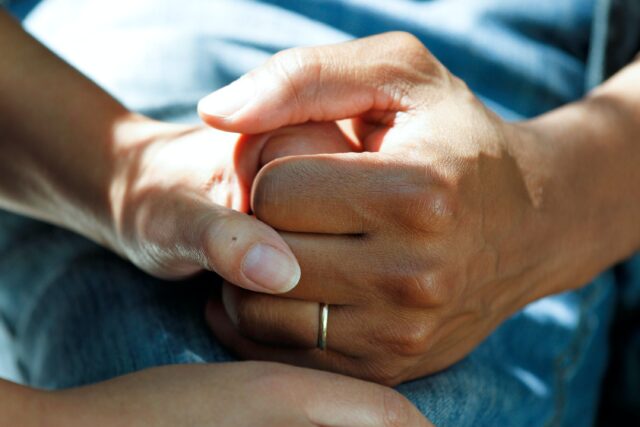I read with interest the recent article in the Lehrhaus by Rabbi Leead Staller on Halakhah and Euthanasia and would like to address several points.
- Rabbi Staller writes, “For one familiar with halakhic literature, it is surprising to see a halakhic question discussed in such abstract and theological terms–instead of in terms of text or legal precedent. Nevertheless, that trend is common when it comes to questions of euthanasia in Halakhah.” In fact it is not surprising at all for two reasons. One is that end of life ethics is a relatively new question in Halakhah. Until about a hundred years ago with the discovery of penicillin there was little that doctors could do to extend the life of a patient. In fact, the main proof that Rav Moshe Feinstein brings for his landmark teshuvah on the permissibility of withholding care in terminal patients who are suffering is based on the Talmudic story of the death of Rebbe (Ketubot 104a, quoted in Igrot Moshe Hoshen Mishpat 2:73) because there were no halakhic sources available to him on which to base his position. (For more on the relevance of this story to an end of life Jewish ethics, see my article, ”Nomos and Narrative in Jewish Law: The Care of the Dying Patient and the Prayer of the Handmaid,” Modern Judaism. 33, no. 1 (2013): 56-74.) The Talmud did not discuss the issue because it was not relevant. Second, as I will discuss, it is patently obvious to all Jewish authorities that one is not allowed to intentionally hasten a person’s death. The idea of easing suffering is, however, discussed in the Talmud. For example, the gemara in Yevamot 37a maintains that even someone sentenced to death by a Jewish court should die with minimal suffering based on the obligation to love your neighbor like yourself.
- In discussing the story of the martyrdom of R. Hanina ben Teradyon, Rabbi Staller writes, “Interestingly, this case is generally invoked in the context of end of life decisions, but never euthanasia. Rav Moshe Feinstein (Igrot Moshe Yoreh Deah 2:174) cites this Gemara about R. Hanina ben Teradyon as a potential source to allow one to remove factors that would prolong a painful end of life, but elsewhere (Igrot Moshe Hoshen Mishpat 2:73) seems to reject this source as a useful model for practical Halakhah, as R. Hanina ben Teradyon was a martyr and the circumstances were extenuating.” In fact, R. Feinstein uses this exact story to discuss euthanasia. He writes “that maybe a non-Jew is not liable for killing done for the benefit of the victim but for a Jew it is not allowed. And maybe this is hinted at by the nature of the prohibitions. By a Jew it is written ‘thou shalt not kill’ in any manner, even if it is for the benefit of the victim. But the prohibition of killing for a non-Jew is written in the language of ‘spilling blood’ and the use of spilling blood is not so applicable to killing for the benefit of the victim (Igrot Moshe Hoshen Mishpat 2:74.2).” This is a very surprising position postulated by R. Feinstein but one must remember that he only suggests it as a possibility to resolve the apparent contradiction in the story where the executioner was allowed to hasten R. Hanina ben Teradyon’s death but not R. Hanina himself by opening his mouth and letting the fire enter.
- My main problem with R. Staller’s article is his conclusion: “The very principle that is being appealed to without strong sourcing–the absolute value of human life–runs parallel to certain strains of Christian thinking and perhaps counter with some elements of Jewish thought.” I reject his thesis that halakhic opposition to euthanasia is based on a Christian influence. Jewish thought accepts the principle of a “good death” without undo suffering but nowhere in Halakhah is euthanasia or physician assisted suicide sanctioned. And this has absolutely nothing to do with Christian influences. There are a small number of poskim who allow withdrawal of care (i.e. removing a ventilator form a dying patient) but no posek would ever sanction euthanasia. A cornerstone of halakhic thinking is that man has no right to actively end the life of another person. This could either be because life has infinite value, as Rabbi Waldenberg maintains, or alternatively, as Rabbi Immanuel Jakobovits writes, it could be because Jewish Medical Ethics is based on duties not rights and there is no right to die in Halakhah. And certainly no physician has the sanction to end the life of his or her patient. This is solely under the auspices of God, not man. If the Christian position agrees with this fundamental Jewish position, so be it, but that does not mean it arose through their influence.
Lastly, on a personal note, in my over thirty years’ experience as a hospital physician who has taken care of too many dying patients, I can only sadly remember one whose pain was not able to be controlled with proper and evidence-based pain management. (With expert consultation and compassionate care, a treatment solution was ultimately found for that patient as well.) Dying patients should never suffer; a halakhic approach to end-of-life care should be to provide the highest quality palliative care available, not euthanasia or physician assisted suicide. I have also witnessed in a relatively brief time period a change in the right to die movement, which sadly confirms the slippery slope argument against euthanasia.
In some European countries, patients are now requesting physician assisted suicide simply because they have lost the will to live or feel they have already lived a complete life, a far cry from allowing euthanasia in cases of terminal illness and unrelenting pain.










 Site Operations and Technology by The Berman Consulting Group.
Site Operations and Technology by The Berman Consulting Group.